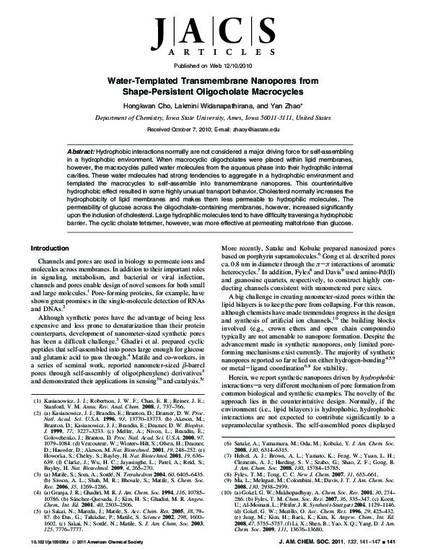
Hydrophobic interactions normally are not considered a major driving force for self-assembling in a hydrophobic environment. When macrocyclic oligocholates were placed within lipid membranes, however, the macrocycles pulled water molecules from the aqueous phase into their hydrophilic internal cavities. These water molecules had strong tendencies to aggregate in a hydrophobic environment and templated the macrocycles to self-assemble into transmembrane nanopores. This counterintuitive hydrophobic effect resulted in some highly unusual transport behavior. Cholesterol normally increases the hydrophobicity of lipid membranes and makes them less permeable to hydrophilic molecules. The permeability of glucose across the oligocholate-containing membranes, however, increased significantly upon the inclusion of cholesterol. Large hydrophilic molecules tend to have difficulty traversing a hydrophobic barrier. The cyclic cholate tetramer, however, was more effective at permeating maltotriose than glucose.
Available at: http://works.bepress.com/yan_zhao/18/

Reprinted (adapted) with permission from Journal of the American Chemical Society 133 (2011): 141, doi:10.1021/ja109036z. Copyright 2011 American Chemical Society.